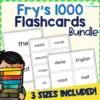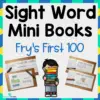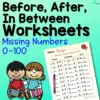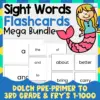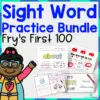Heavenly bodies are fascinating for children. The sun, moon, stars, and planets are highly interesting. As they learn more about space, they will understand the world they live in better.
Explore the space with these ten activities designed for young minds to enjoy. These enjoyable activities are engaging and perfect for space science unit study.
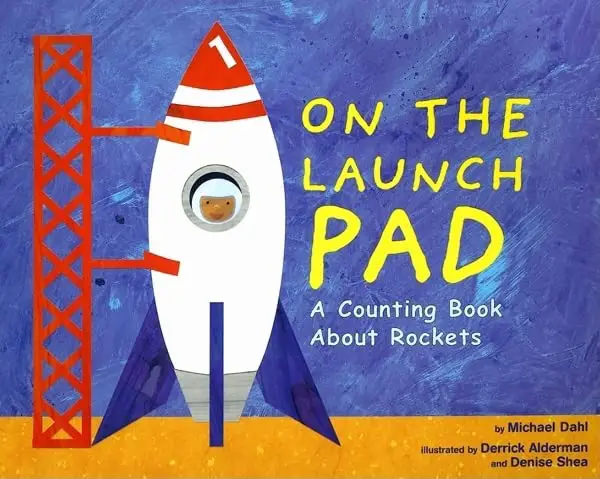
The use of children’s literature helps children understand concepts and understand the world they live in. The site lists ten books that children will have a fun time exploring the idea of space.
One of these books is called On The Launch Pad and helps children improve their counting skills and informs them about the preparations of tireless experts in making this feat possible. This book also incorporates counting into each page so you can help kids practice numbers while introducing the concept of going to space.
Other books about space, both fiction and non-fiction are featured on the site to inspire kids’ imaginations about what space is like and what it would be like to go there.
Explore the different careers related to rocket launchings, such as engineers and astronauts, to encourage children to consider this field of science.
Have an art activity where children can make their version of a rocket ship using readily available materials. Let them name their rocket ship and talk about its destination and mission.
For this activity, you will need:
- Books about space
For more information on this activity, go to EducationOutside.org.
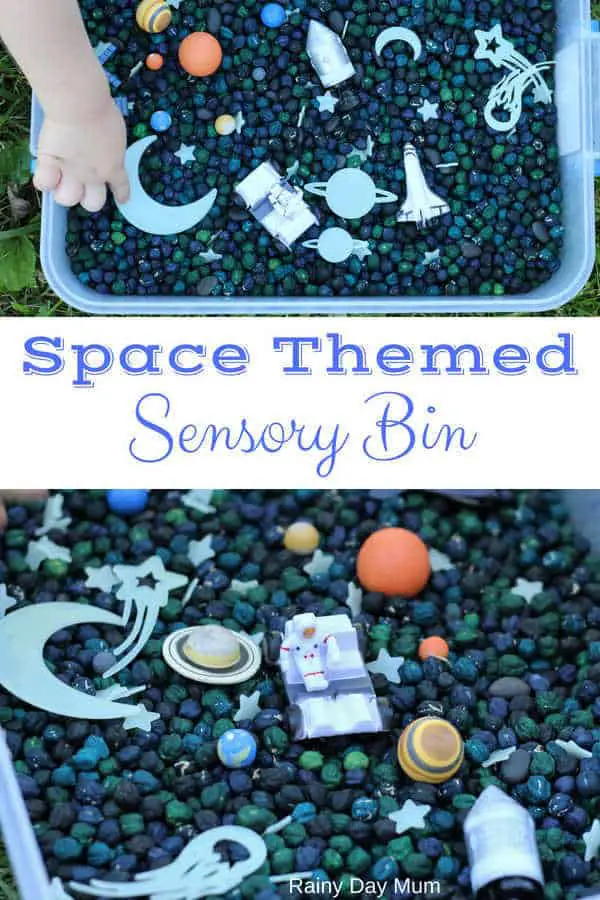
Make this space-themed sensory bin for children to explore the different celestial bodies. Children will have fun digging and discovering these objects while having a wonderful sensory experience.
This activity is inspired by the book There was an Old Martian Who Swallowed the Moon by Jennifer Ward. Children may retell the story using the objects that are in the bin.
It uses dyed dried chickpeas, but the site suggests using other bin fillers such as pompoms, cotton balls, straws, shredded paper, leaves, and others if the chickpeas are unavailable.
Dye the chickpeas using blue, green, and purple watercolors. Head to the site for the step-by-step procedure and exact measurement of materials. Ensure that the chickpeas are dry before use.
Once the chickpeas are ready, place them in the bin. Put the toy stars, planets, and space vehicles in for children to bury and dig. Let them name the objects they find to help increase their vocabulary.
For this activity, you will need:
- Dried chickpeas
- Liquid watercolors
- Glow in the dark stars
- Toy planets and sun
- Toy space vehicles
- Large bin
For more information on this activity, go to RainyDayMum.co.uk.

Make an out-of-this-world artwork using cutouts and torn pieces of paper. Children can learn the circle shape with this activity. They can also compare the size of the circles.
Tracing, cutting, tearing, and pasting will help improve their fine motor skills.
Choose objects that can be used to trace circles on black paper. Use varying sizes of circles for this activity. Cut these out carefully, ensuring the rest of the paper is intact.
Place the black paper with holes on white paper and trace the circles. This will become the guide for children when pasting the paper strips.
Take the colored craft papers and tear them into strips. Glue these inside the circles on the white paper. Use different colors alternately to create an interesting effect.
Repeat the process on the other circles. Trim the excess once the glue dries. Finally, glue the black paper on top and add the star stickers.
For this activity, you will need:
- Craft paper
- Scissors
- Star stickers
- Circle-shaped objects
- Glue
For more information on this activity, go to TamingLittleMonsters.com.
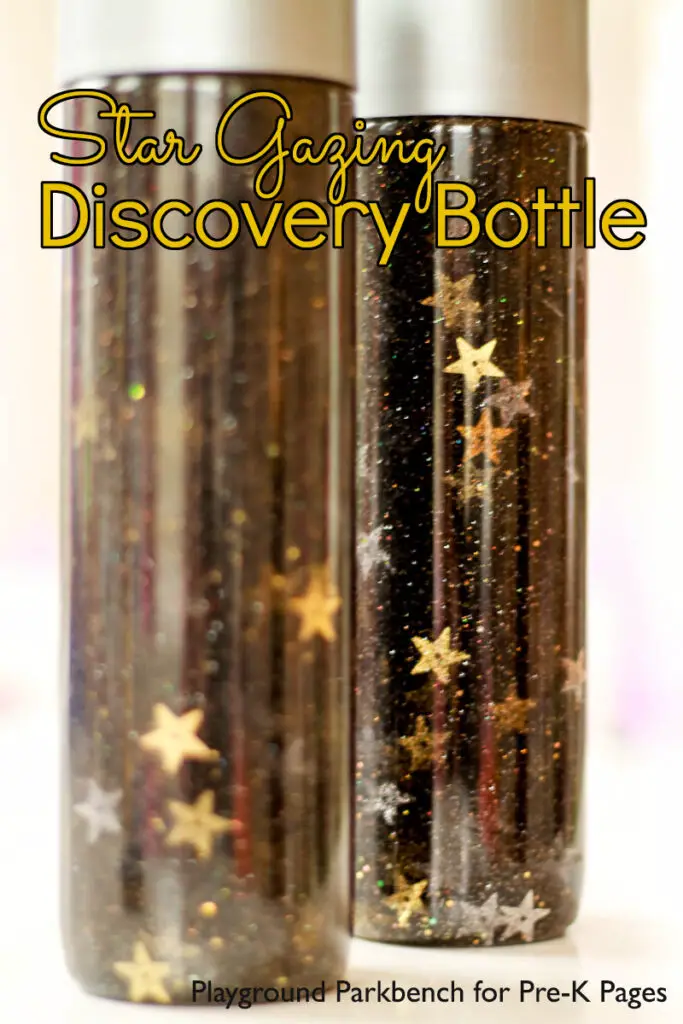
These star gazing discovery bottles are a visually stimulating sensory tool that will allow children to increase their focus, improve their attention to detail, and help with calming down.
These bottles are perfect for centers and calm-down corners. Children can count the stars, identify their colors, and find identical stars to improve their matching skills.
The site suggests varying the number of sequins placed in each bottle for children to compare their weight.
Clean the bottles well and take off the labels. Mix an eight-ounce bottle of glitter glue in a measuring cup with one and a half cups of warm water. Stir these well to combine thoroughly.
Carefully transfer the mixture to the plastic bottle and add the star sequins. Replace the cap and test before sealing.
Add more or less water depending on the desired consistency. More water will make the mixture less dense, making the sequins move faster.
For this activity, you will need:
- Clear plastic bottle
- Warm water
- Glitter glue
- Star sequins
- Clear hand soap
- Super glue
- Measuring cup
For more information on this activity, go to Pre-KPages.com.
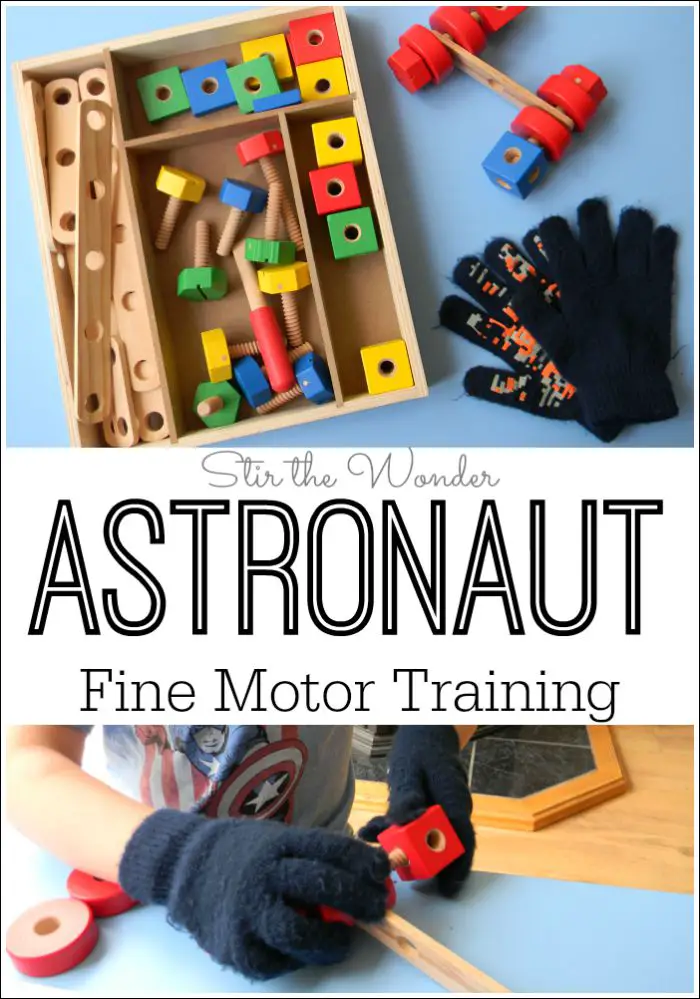
One of the astronauts’ responsibilities is to keep their space shuttles in perfect working condition, so they can perform experiments, complete their mission, and get back home.
Use videos or pictures to explain how astronauts perform their jobs.
Let children explore this significant task through play with this construction box set. The wooden nuts, bolts, and other pieces will allow them to build their own space vehicle while their imagination and creativity improve.
Doing this will help enhance their eye-hand coordination, focus, and patience. This activity will also provide a wonderful sensory experience. Using the garden gloves will resemble a real astronaut at work.
Have children wear gloves. Assist them in positioning their fingers correctly. Next, ask them to use the different pieces to build their space vehicle. The nuts can become the wheels of their vehicles.
Once finished, let the children explain their vehicle’s design and purpose. Doing this will help enhance their critical thinking skills.
For this activity, you will need:
- Wooden construction box set
- Garden gloves
For more information on this activity, go to StirTheWonder.com.
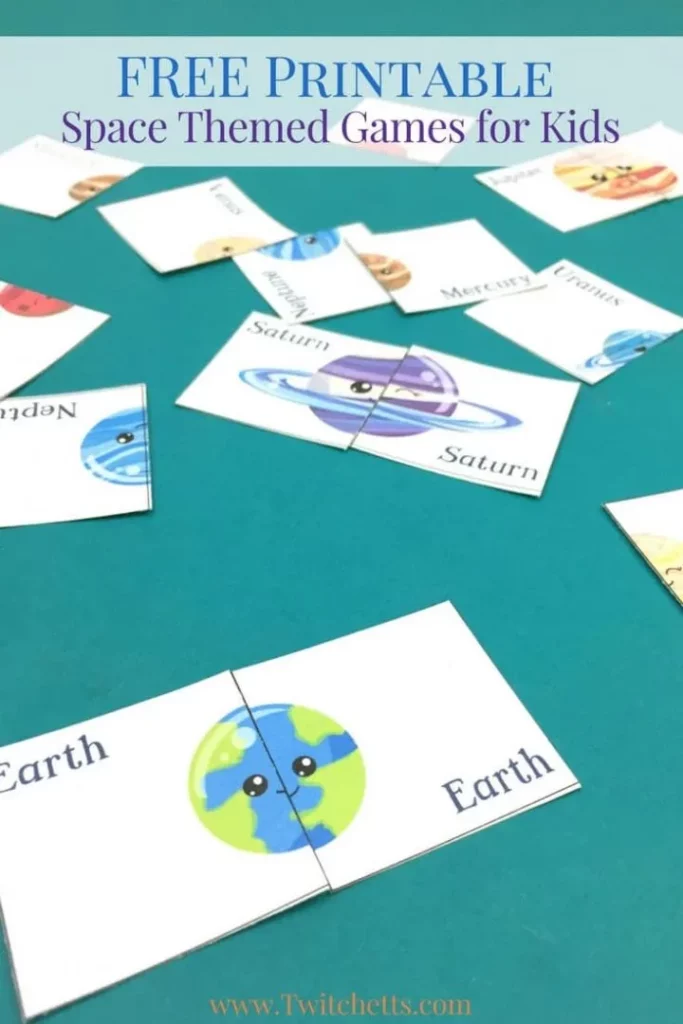
These adorable planet cards teach children about the planets in our solar system. Knowing the names of these planets will increase children’s vocabulary. They may also learn the order of planets from the un using these cards.
Introduce symmetry by using this resource. Children may also match or use the cards to play a memory game. These activities will help improve their memory, matching skills, focus, and attention to detail.
Download, print, and cut out these free planet cards from the site. Laminating these is recommended for durability. Place all the cards in a pile and have the children find the matching cards to match.
To play the memory game, turn the cards face down and have the children find the matching cards.
Once the cards are matched, allow children to arrange the planets in order from the sun. Make a sun craft from construction paper for this activity, or use a picture.
For this activity, you will need:
- Printed planet cards
- Sun picture
For more information on this activity, go to Twitchetts.com.
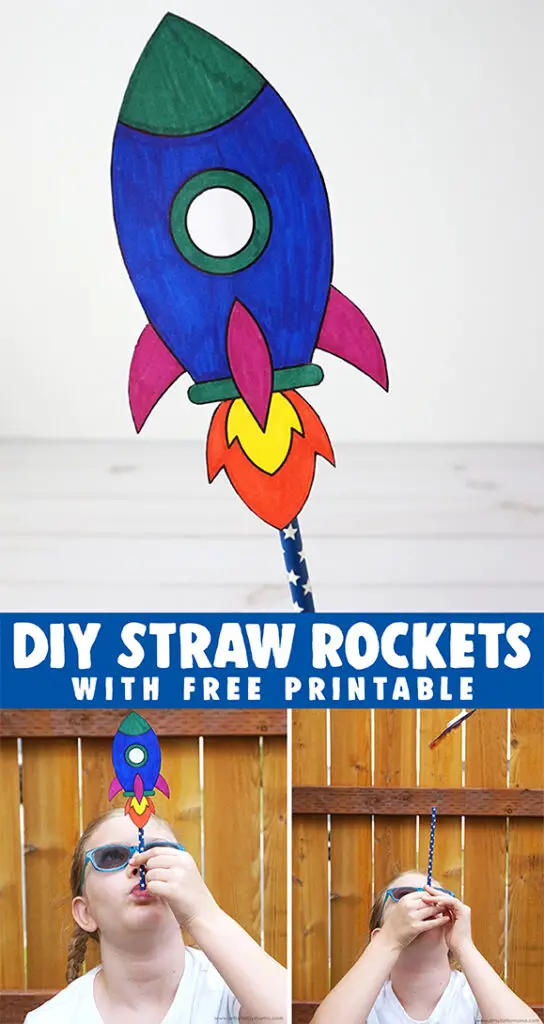
Children will have a blast launching these colorful rocket ships. This STEM activity teaches children about motion and gravity. Have children make rockets in different colors to teach color recognition skills and patterns.
The site suggests experimenting by blowing the rocket at different angles to determine the farthest it can reach. With a science lesson, explain the force of the air that enables the rocket to fly and gravity.
Adding weights like a paper clip is also suggested to see whether it will still fly the same way.
Download and print the free rocket template from the site. Have the children color and cut these out. Cut a regular plastic drinking straw about two inches long. Seal the end with sticky tape and glue this to the back of the rocket. Let the glue dry.
Next, insert the paper straw and let the children test to see if their rockets will fly.
For this activity, you will need:
- Printed rocket template
- Markers
- Scissors
- Glue
- Drinking straws
- Sticky tape
For more information on this activity, go to ArtsyFartsyMama.com.
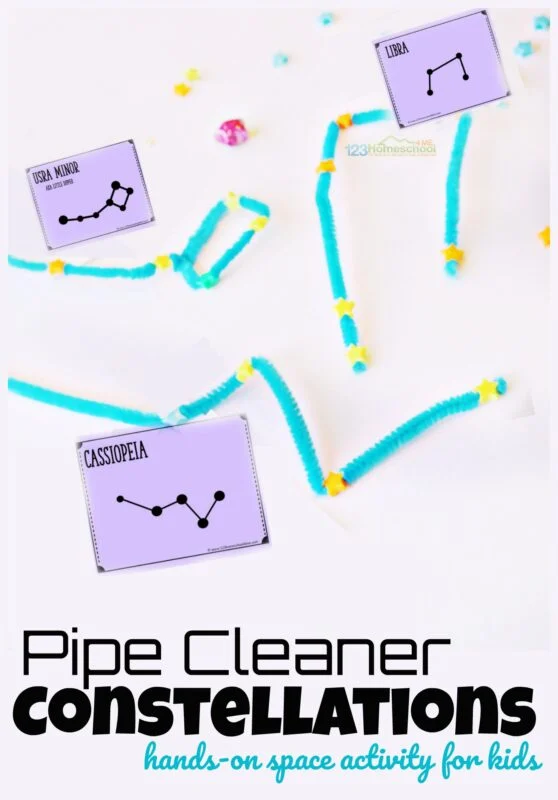
Children who are avid star gazers will enjoy this activity that turns constellation images into concrete objects that will help them easily remember their appearance. The site provides free constellation cards for children to use.
Using pipe cleaners and beads to create this unique constellation craft will help improve children’s hand-eye coordination and fine motor control.
This activity is perfect for centers and for a space unit study. Use pictures and videos to show what they look like.
Download and print the free constellation cards from the site. Cut this out and laminate it if possible for durability. Next, give the children a card, star beads, and a pipe cleaner.
Have them copy the constellation by inserting the beads and positioning them to make them look like the image on the card.
There are twenty constellation cards to make. Choose those that are easy to make for young children and challenging cards for older kids.
For this activity, you will need:
- Printed constellation cards
- Pipe cleaners
- Star-shaped pony beads
For more information on this activity, go to 123Homeschool4Me.com.
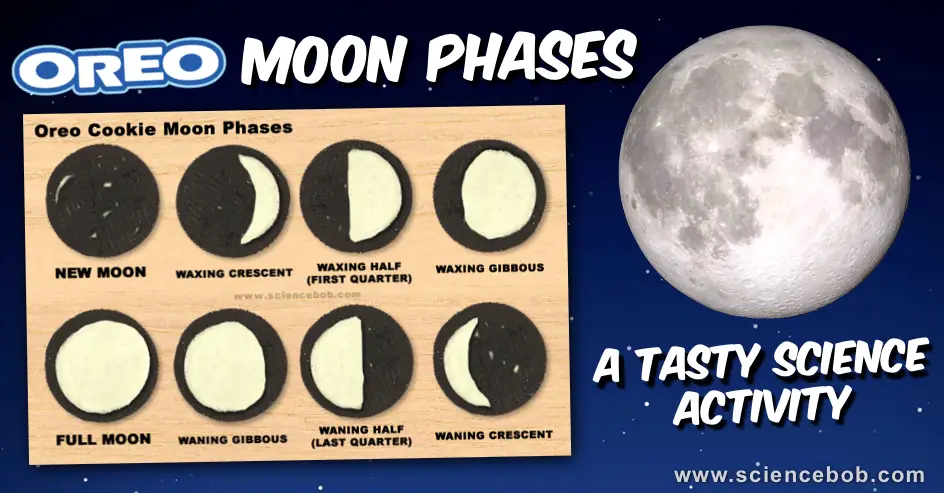
This is a beautiful visual and edible representation to explain the different phases of the moon. Children will improve their hand-eye coordination skills and fine motor control as they scrape off the frosting on the cookies.
With a science lesson, teach children the reason for the varying appearance of the moon. Use videos, books, and pictures for this part. Use the free printable provided for children to use as a guide.
Chill the cookies in the refrigerator. Doing this will make the frosting firm and easier to shape. Twist off the cookies carefully. The frosting should remain intact in one of the cookies. Assist children with this step.
Next, download and print the free moon phases guide for children. Provide a craft stick or a plastic knife so children can scrape off the frosting and shape this into a specific phase. Arrange the cookies in order as presented in the printable.
For this activity, you will need:
- Printed moon phases sheet
- Oreo cookies
- Craft stick
For more information on this activity, go to ScienceBob.com.
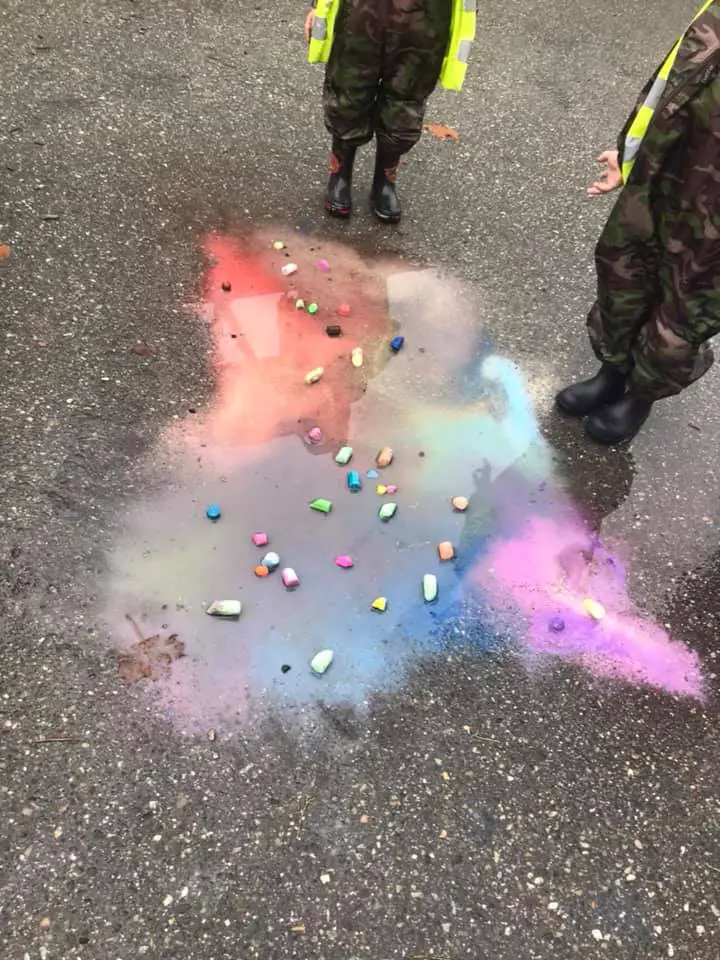
Make the most out of the rainy weather while learning about space with this colorful activity that children will surely enjoy making. This excellent outdoor activity will allow children to enjoy the puddles outside.
This activity will provide a wonderful sensory experience, help children with color recognition skills, and learn about color mixing.
Explain the galaxies to children with a science lesson and use videos, pictures, and books to explain this concept fully. Allow children to observe the galaxy’s appearance, its swirls of colors, and its unique light formations.
Find a puddle outside after the rain or make one. Cut up the chalk into small pieces that children can comfortably hold. Let them dip these in the puddle to create colored water.
Repeat this process with the other colors of chalk and let the children observe the colors combine to create an abstract image similar to the galaxy in pictures.
For this activity, you will need:
- A puddle
- Colored chalk
- Pictures of a galaxy
For more information on this activity, go to RainforestLearningCentre.ca.
Conclusion
Encourage budding space scientists as they learn and understand the vast space beyond our planet Earth with these wonderful activities. Let children explore and become inspired by our amazing world by learning about the different celestial bodies.
Thank you for reading. Come back and check out our other activity articles soon.
Related crafts and resources:


